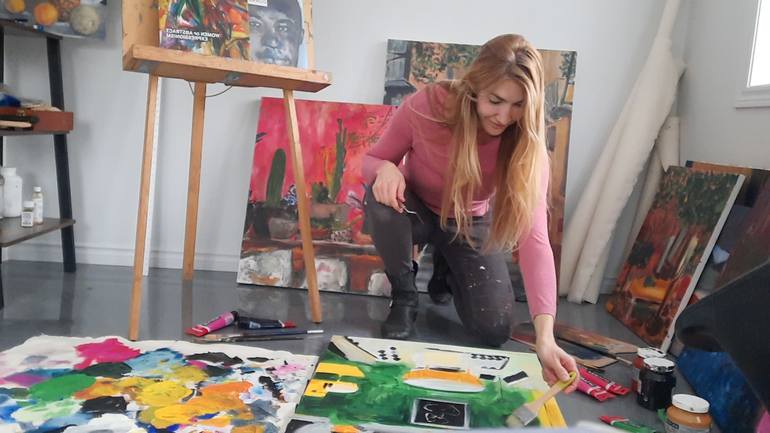Types of Photo-Based Paintings: Unlocking Creative Pathways
Professional photographers constantly seek new ways to express their creativity and expand their artistic boundaries. One compelling method is exploring the diverse types of photo-based paintings available. These innovative art forms blend photography and painting, creating striking visuals that captivate audiences.
Understanding the array of photo-based paintings is essential for any photographer eager to delve into this art form. From recreating photograph-like details to interpreting images through artistic lenses, these styles offer numerous possibilities for creative expression.

The Intersection of Photography and Painting
Photo-based paintings marry the precision of photographic accuracy with the emotive qualities of traditional painting. This unique blend enables artists to produce works that carry a photorealistic quality while embracing abstract interpretations.
As photographers, understanding this fusion offers a chance to expand your portfolio and appeal to new audiences. Whether aiming for photorealism or abstraction, each style has its significance in the art world.
Types of Photo-Based Paintings
1. Photorealism
Photorealism involves creating paintings that closely resemble photographs. Artists meticulously reproduce photographic details, focusing on precision and accuracy. This style requires patience and skill but offers remarkable rewards, with paintings often mistaken for actual photographs.
2. Impressionism
Impressionism embraces the essence and mood of photographs rather than exact replication. Artists interpret photos through their perception and experience, allowing creative liberties and personal expression to shine. This approach invites photographers to explore their emotional connection to imagery.
3. Surrealism
Surrealism unleashes the imaginations power by blending reality and fantasy. Artists use photography as a base but venture into dreamlike realms. This method is perfect for photographers intrigued by creating visually captivating worlds beyond reality.
4. Abstraction
Abstraction strips images to their core elementsshapes, colors, and lines. By focusing on key features, artists turn photographs into vibrant abstractions that convey powerful emotions. This style detaches from the photographs original context, offering new dimensions to explore.
Techniques to Enhance Creativity
Exploring photo-based painting styles demands more than choosing a genre. Employing techniques like mixed mediacombining digital and traditional methodscan elevate your art significantly. Experimenting with textures, color schemes, and brush techniques can also transform a simple photo-based painting into a masterpiece.
An essential skill for photographers venturing into this arena is developing a unique perspective. This involves understanding how to interpret photos through an artistic lens, embellishing upon key aspects that inspire you, and conveying deeper meanings than the photograph alone could achieve.
Challenges and Trends
While photo-based painting offers exciting opportunities, it also presents challenges. Achieving realism requires technical expertise, while abstract interpretations demand a solid understanding of artistic principles.
However, evolving trends make this journey worthwhile. Digital tools have transformed [photo-based painting techniques](https://photo4art.com/blogs/our-all-posts/photo-based-painting-techniques) allowing for seamless blending of the digital and physical realms, opening endless possibilities for innovation.
Inspirational Artists and Their Journey
Observing the works of renowned photo-based painters can inspire your pursuits. Artists like Chuck Close and Gerhard Richter have redefined this field through their eclectic approaches, fusing realism with abstraction, thereby broadening the scope of photographic art.
Understanding their journey allows photographers to appreciate the evolution from traditional photography to expressive painting. Essential insights can also be gained from exploring diverse [photo-based painting art styles](https://photo4art.com/blogs/our-all-posts/photo-based-painting-art-style) across cultures and timelines.
Conclusion
Engaging with types of photo-based paintings offers photographers the chance to rejuvenate their creative processes and leave an indelible mark in the art world. This journey promises to hone their skills and foster individuality as they experiment beyond the camera lens.
As you embark on this artistic endeavor, seize opportunities to learn from [examples of photo-based paintings](https://photo4art.com/blogs/our-all-posts/examples-of-photo-based-paintings) and seek inspiration from varied sources.

FAQs
1. What is photo-based painting?
Photo-based painting involves using photographs as a reference or base to create art that blends photographic realism with personal interpretation and artistic expression.
2. Can photo-based paintings be created digitally?
Yes, digital tools have revolutionized this field, allowing artists to craft stunning digital photo-based paintings that capture the essence of their reference images.
3. How can I transition from photography to photo-based painting?
Start by analyzing how your photographs convey emotion and story. Experiment with different [digital photo-based paintings](https://photo4art.com/blogs/our-all-posts/digital-photo-based-paintings) techniques and study the works of artists who have excelled in this arena for inspiration.

